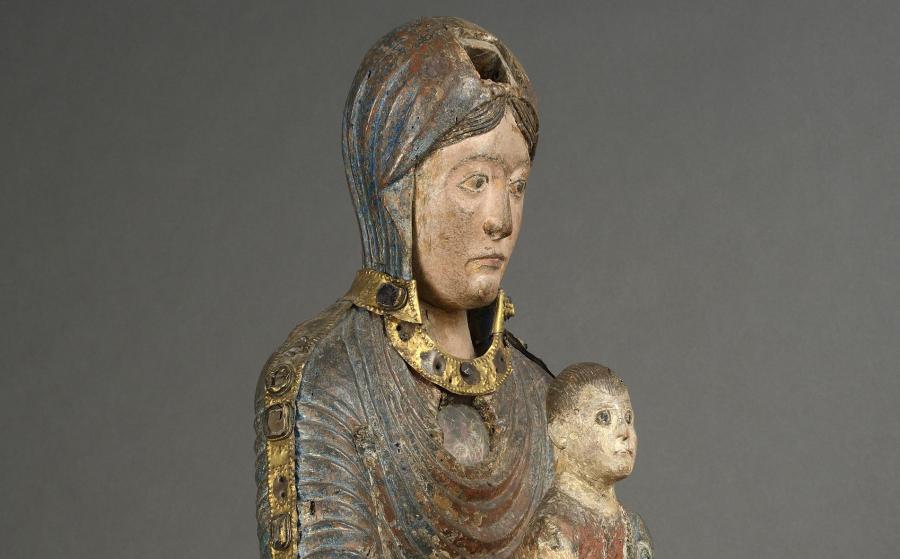Virgin in Majesty
Information sur l’artiste
France, Auvergne

Vierge de majesté, seconde moitié du XIIe siècle.
Image © Lyon MBA - Photo Alain Basset
The Virgin in majesty is also called the Virgin of Saint-Flour after the city in the Cantal department where it originates. It is an exceptional example of the Roman art that flourished in the Auvergne region in the second half of the 12th century.
The Virgin in Majesty is portrayed sitting on a throne, holding the Infant Jesus on her lap. Here, Mary sits on an arched throne, an allusion to New Jerusalem.
This work portrays the Infant Jesus in a highly unusual pose: his right hand is resting on that of his mother. He appears to be about to free himself from the maternal embrace and move towards the viewer. The asymmetrical position of the arms and legs contribute to this impression. The Virgin holds the Infant by the waist and the right knee in a tender gesture which gives the piece a human, almost intimate quality. Works such as this sculpture traditionally portray them as solemn figures. The fine, lifelike folds of the clothing worn by Jesus and the Virgin fit very naturally with these movements. Another singular feature is that this Virgin in Majesty and the throne on which she sits have retained some of their metallic veneer decorated with nails, set with precious stones, as well as part of the mediaeval polychrome design. Two holes, one in the Virgin's head and one in her chest, show that to this sculpture was used as a reliquary.
In the 12th century, the Auvergne region specialised in the production of these figures of the Virgin in Majesty seated on a throne facing forwards, holding the Infant before her. After the Council of Ephesus (A.D. 431), which proclaimed the dual nature of Christ – divine and human – and stated that Mary is the Virgin and Mother of God (Theotokos), these images of the Virgin, the 'Throne of Wisdom' (sedes sapientiae), bearer of Christ the King, appeared in Eastern and then Western art. The statue would have been set above the main altar at the back of the apse, but may also have been carried during formal processions.
Auvergne
Second half of the 12th century
Polychrome wood with metal decoration
H. 71; 1. 31; D.30 cm
Purchased in 1934
Inv. B 1751





